Use this five-move chest workout with resistance bands to build upper-body strength
We asked a personal trainer for his top resistance band chest exercises you can do wherever you are


This chest workout with resistance bands is an ideal option if you're working out at home, away from the gym, or traveling, but still want to work your upper body and develop strength in your chest.
All you need is a set of the best resistance bands to get started. These are more affordable than weights like dumbbells and kettlebells, come in sets of different resistances so you can find a load that'll challenge your muscles, and are easier to store than weights too.
This doesn't make them less effective, though. “To create muscle growth, we always need to work to a challenging stimulus,” Florida-based personal trainer and Living.Fit contributor Jesse Grund says.
We asked Grund to design a short routine with resistance band chest exercises that you can do with a looped or tubed band to strengthen your muscles and make every day tasks like carrying groceries or lifting heavy objects easier.
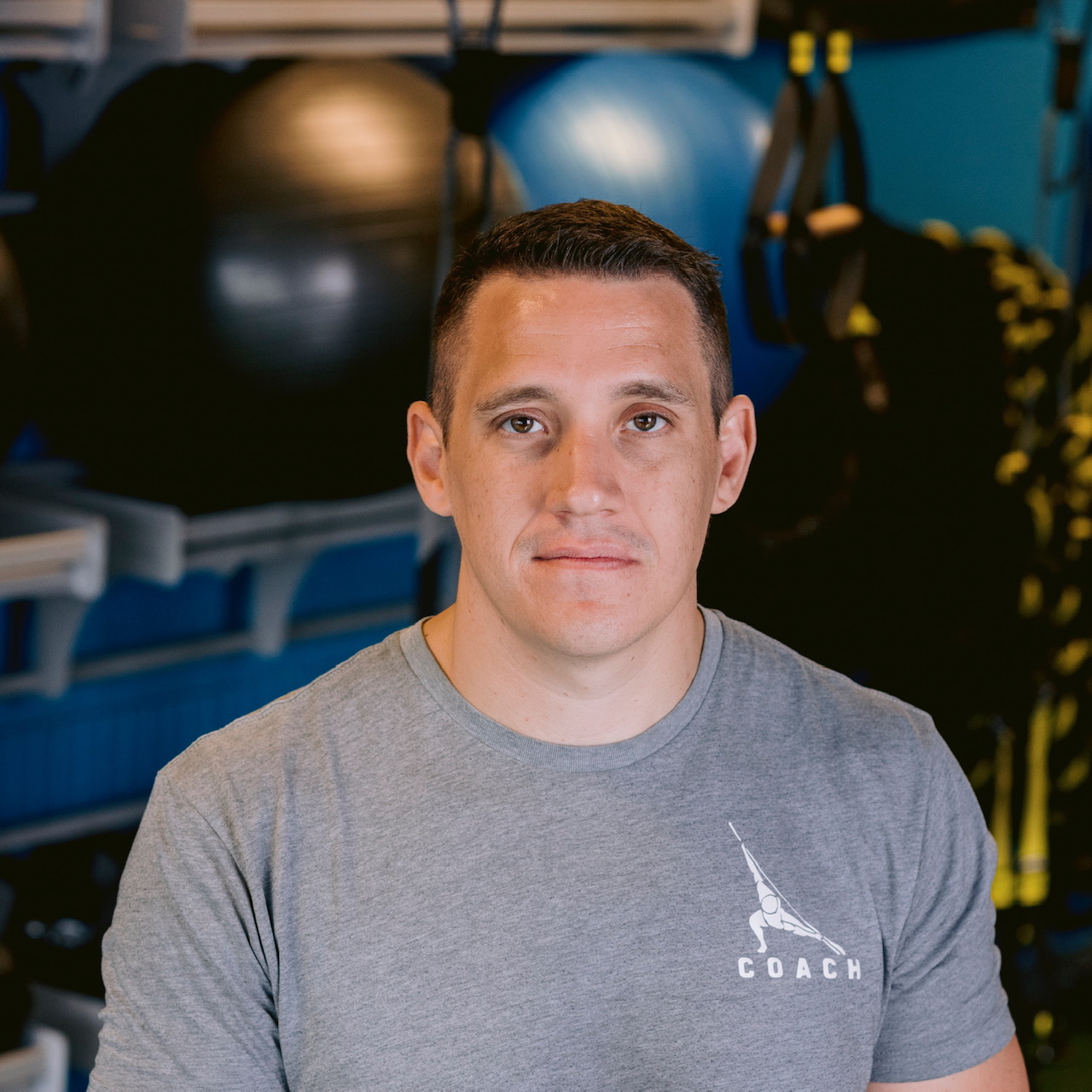
Jesse Grund is a strength and conditioning coach and owner of Unconventional Strength gym in Orlando, FL. He contributes to Living.Fit and is a National Council on Strength and Fitness (NCSF) certified strength coach. Grund holds a Master's degree in Applied Exercise Science from Concordia University, Chicago.
Five-move chest workout with resistance bands
Grund has designed this chest workout with resistance bands to develop strength and mobility in your upper body. The aim is to do 10-12 repetitions of each exercise for four sets, with 30-60 seconds rest between sets.
1. Single-arm resistance band chest fly

To perform this move, you’ll need to use either a tube resistance band or a thin closed-loop band which you can attach to a strong and sturdy anchor point.
- Attach your resistance band to an anchor point at chest height.
- Stand side on to the anchor point and hold one end of the band with your closest hand. Step away from the anchor point until your arm is horizontal, with a slight bend in your elbow and there’s some tension in the band.
- Stand with your feet shoulder-width apart and engage your core. Keeping a neutral spine throughout, use your pectoral muscles to pull the band across your body until your arm is in front of you in line with your sternum.
- Return to the start under control. Do all repetitions on one side, then switch to the other side.
2. Resistance band incline press
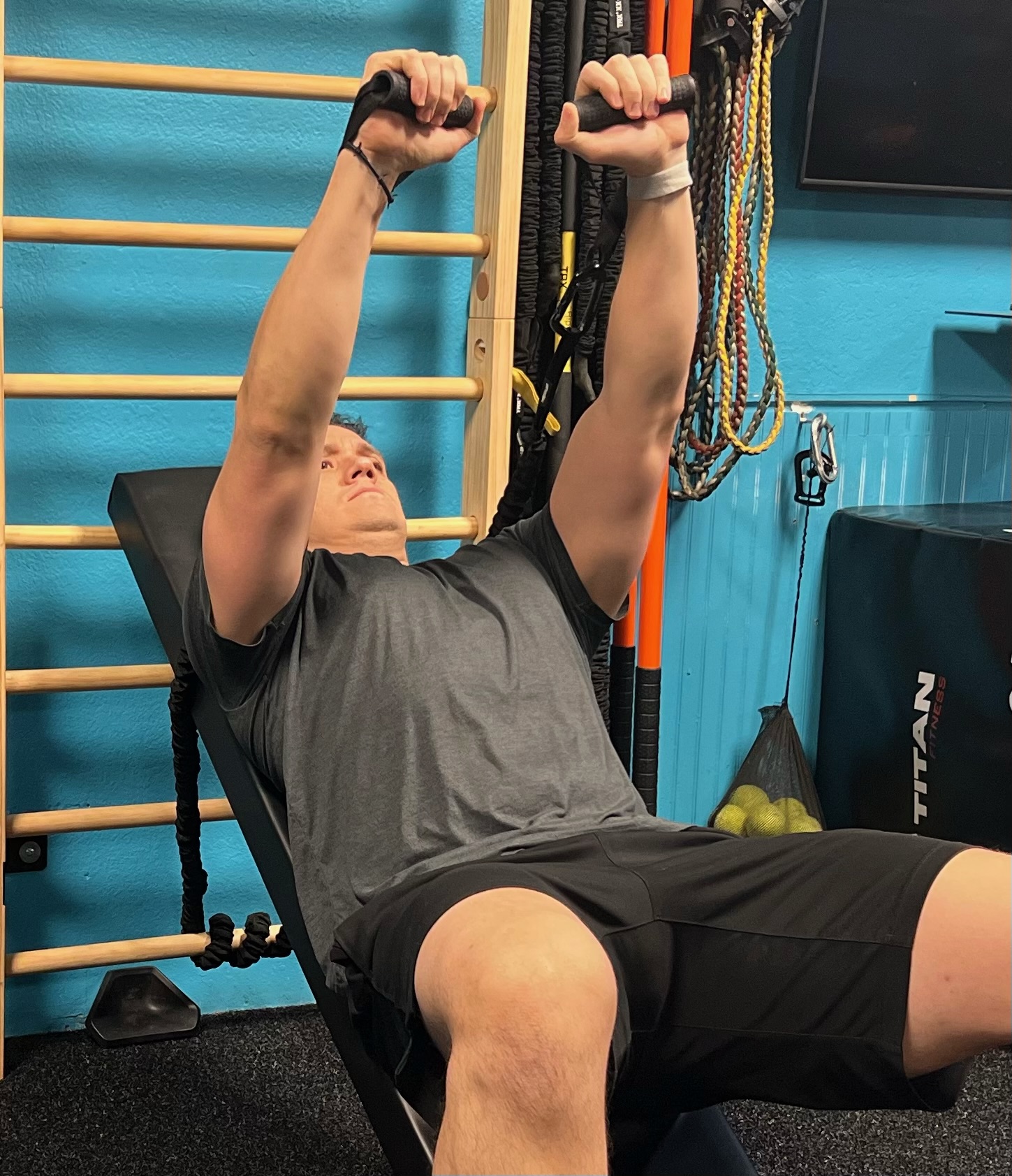
You’ll need a weights bench set to a 15 or 30-degree incline for this move. If you don’t have something suitable, you can skip this exercise.
Get the Fit&Well Newsletter
Start your week with achievable workout ideas, health tips and wellbeing advice in your inbox.
- Attach your resistance band to an anchor point behind you, or place it around your back, with some resistance band in the starting position.
- Lie on an incline bench with your feet firmly on the floor and hold the ends of the band by your chest.
- Push the ends of the bands away from you. Return to the start position to complete the repetition.
3. Banded push-up
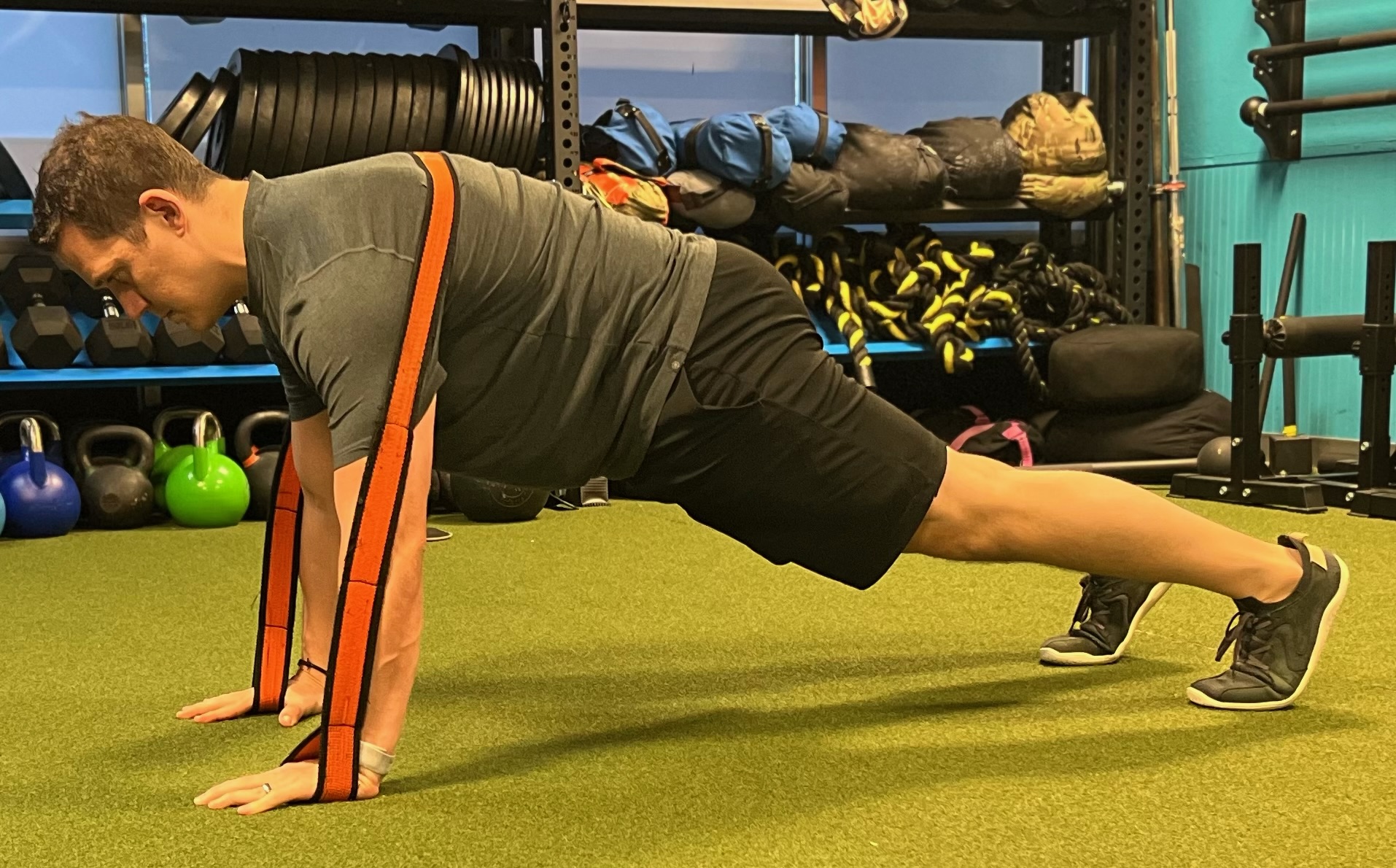
Mastered how to do a push-up? Then progress to a banded push-up which increases the difficulty of the move.
- Wrap the band across your upper back below your shoulders. Lie face down on the floor holding the band in both hands, with your hands next to your shoulders. There should be slight resistance in the band.
- Exhale and push yourself up and into a plank position with your hands shoulder-width apart and feet slightly wider than hip-width apart. Be sure to engage your core and keep a neutral spine.
- Inhale through the nose and lower your chest to the floor slowly. Let your elbows flare to the sides.
- Exhale and push yourself back to the starting position.
4. Resistance band Pallof press
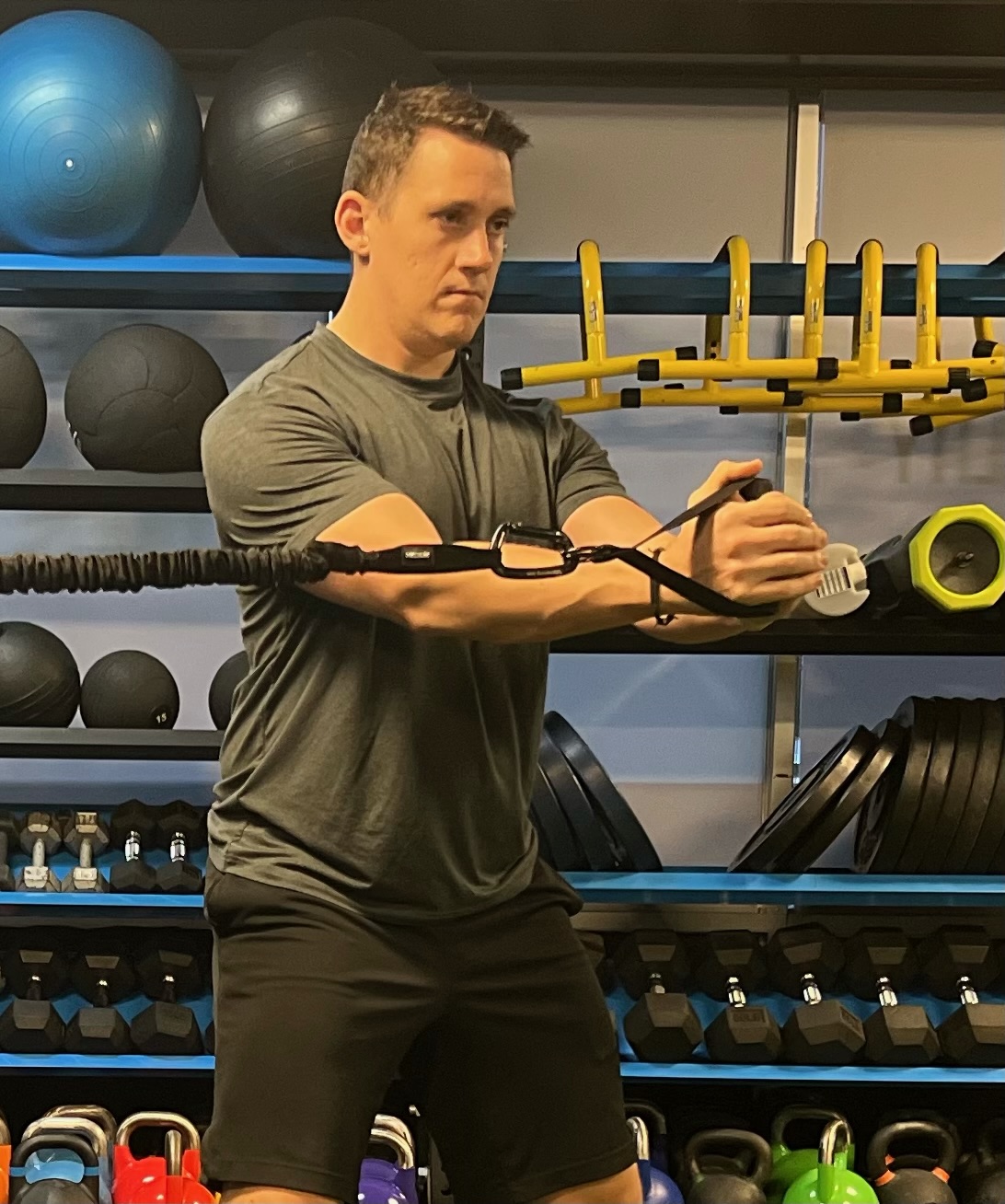
A Paloff press works your chest but also helps to develop your core muscle.
- Attach your resistance band to an anchor point at chest height.
- Stand side on to the anchor point and hold one end of the band in both hands in front of your chest. Keeping your feet shoulder-width apart, a neutral spine and engaged core, step away from the anchor point to create tension in the band.
- Extend both arms out in front of you, resisting the pull to the side.
- Return to the start with control to complete one repetition.
5. Resistance band floor press
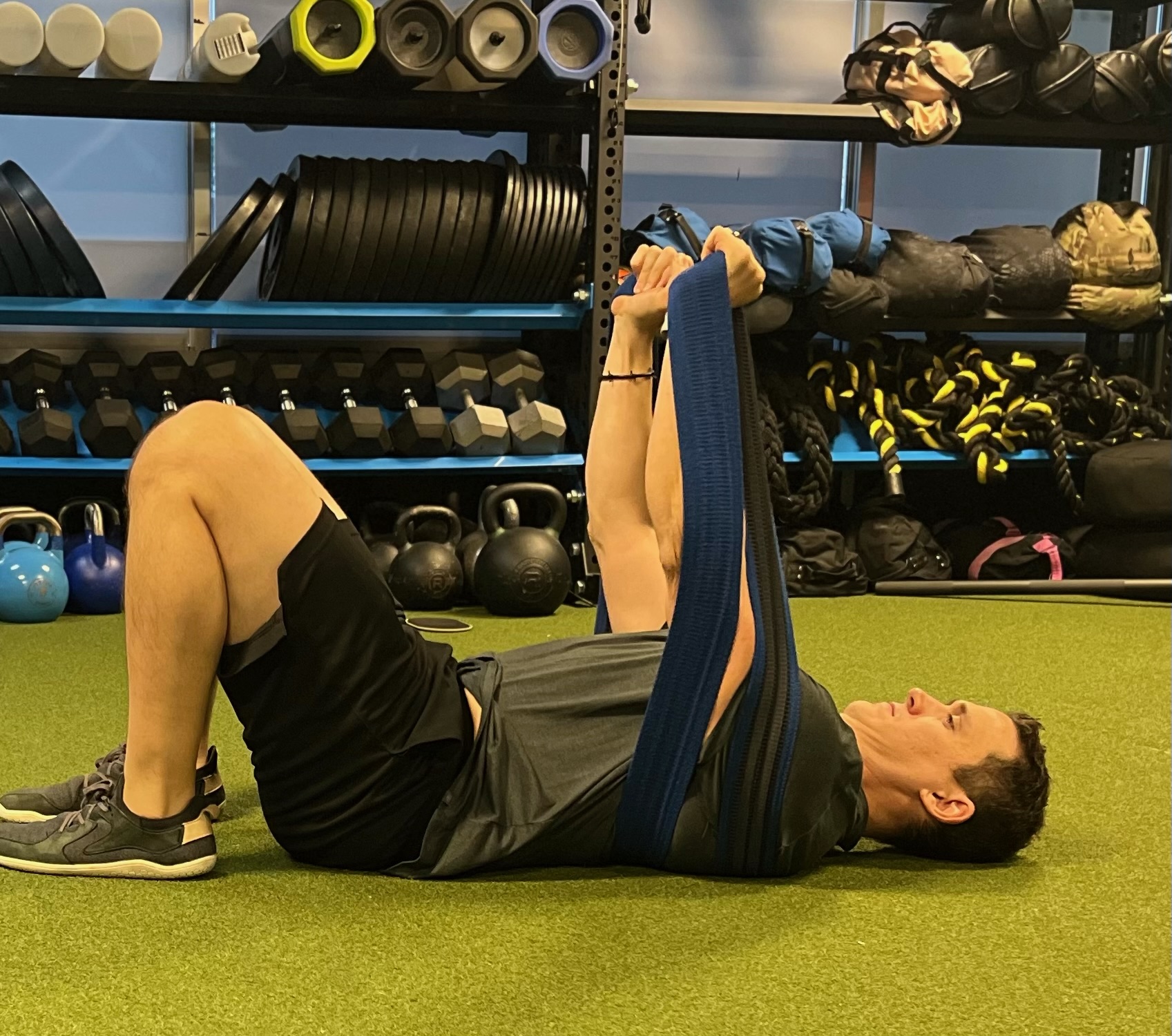
- Wrap the band across your upper back below your shoulders.
- Lie on the floor with your knees bent, feet flat and your lower back pushed into the floor.
- Hold the ends of the resistance band to the sides of your chest, with your upper arms on the floor and forearms vertical.
- Extend your arms straight up. Pause, then lower slowly to the start position.
FAQs
Why use resistance bands for chest workouts?
Many people compare resistance bands vs weights when they're looking to build muscle. Both increase the resistance on your muscle, but bands place the muscles under constant tension
This means you're working your muscle during the pushing and pulling portion of the move. And if you have a controlled lowering or "eccentric" phase to return to the start position, this tasks your muscles all the way through the movement.
While a set of the best adjustable dumbbells can be a great investment, weights are often expensive and hard to store, whereas resistance bands are generally quite affordable and easy to pack away after your workout.
But switching to resistance bands doesn't mean you're taking an easier route or working your muscles less. A study published in the scientific journal Frontiers in Sports and Active Living found that resistance band deadlifts "produced higher force when compared to free weights".
This increased force, combined with the constant pressure on your muscles thanks to the resistance band's elastic force, helps to tax your muscles and work them harder. This, in turn, will help them grow.
Are resistance band chest workouts effective?
If you're performing these resistance band movements, you're working to tax your muscles, and they might be sore the next day. The reason they're sore is something called delayed onset muscle soreness (or DOMS) caused by lots of very small tears in the muscle fibres.
Don't worry, these tears are totally normal. The muscle repairs these tears over time, leaving it bigger and stronger than when it started. Think about filling in a crack in the sidewalk with cement, then spreading another layer of cement on top. If you do that once a week, soon the layer of cement will be much thicker than it used to be.
The cement is your muscles: over time, your muscles get thicker and stronger. However, in order to do this, you'll need a good source of protein to consume after your workout, which acts like cement mixture. Great sources of protein can be pulses like peas and beans, legumes, soy, lean red meat and white meat such as chicken or turkey.
Try and eat a good-size serving of protein as soon as possible after a workout in order to help your muscles grow. Alternatively, you can check out our guide to the best protein powder for weight loss, which offers a convenient low-carbohydrate muscle-building solution.
Can you build a stronger chest with just resistance bands?
Although it's more common for people to develop their chest with weights, you can strengthen your chest muscles with resistance bands, explains personal trainer Sammy Hamouda.
"Using resistance bands can be very beneficial for creating added resistance on the muscles, especially at the phase where tension would begin to ease off (at the point where you are contracting the muscle) when doing the same exercise using weights," he says.
"So you can definitely build a stronger chest using only resistance bands. However, for those looking to grow their muscles, an optimal way to do so is by including free weights and resistance cable machines in their training."
Overall, resistance bands have their place in a muscle-building workout, especially when you're just starting, but to feel the effects of the progressive overload technique, you'll need to increase the load as you get stronger, and you may find a limit with bands alone.
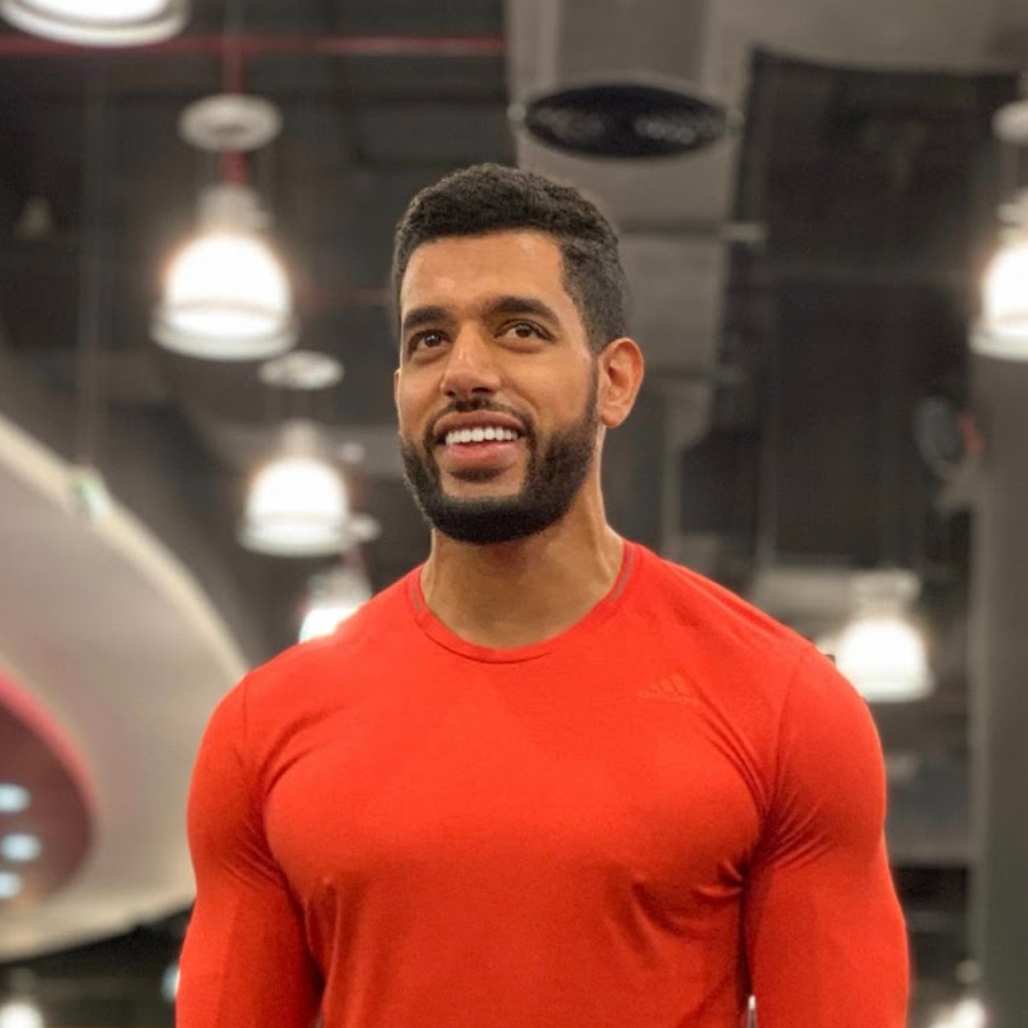
Sammy Hamouda is a level 3 certified personal trainer with over 10 years of experience. He has been in the fitness industry since 2014, working with a range of clients to achieve many different goals and challenges in both the United Arab Emirates and the United Kingdom.
Why don't bodybuilders use resistance bands?
You don't generally see bodybuilders using resistance bands, but why is that? "The issue with using just resistance bands, and the main reason why bodybuilders don't use them, is that it can be quite limiting for progression.
"Once you get comfortable using a band with the highest resistance, there's not much room for improvement," notes Hamouda. "Also, using a resistance band does not create tension on the phase of the movement starting from the stretched position."
So, resistance bands are great for amateurs or lighter workouts, but when working at the level of a bodybuilder, they don't do all that much. "The ideal use of resistance bands for bodybuilders would be to use them while lifting free weights," added Hamouda.
"This way, the weights create more tension and the resistance bands take over as the band stretches to create force against the muscle, allow muscle tension to be high throughout the exercise."
Becks is a freelance journalist and writer with more than 7 years of experience in the field. She writes health and lifestyle content for a range of titles including Live Science, Top Ten Reviews, Tom’s Guide, Stylist, The Independent, and more. She also ghostwrites for a number of Physiotherapists and Osteopaths.
Health has been a big part of Becks’ lifestyle since time began. When she’s not writing about the topic of health, she’s in the gym learning new compound exercises. And when she’s not in the gym, she’s most probably reading.
-
 This is the exact running plan I followed for two months to finally get my 5K run time under 30 minutes
This is the exact running plan I followed for two months to finally get my 5K run time under 30 minutesAnd it helped me fall in love with running again
By Ruth Gaukrodger Published
-
 I increased my step count back to 10,000 a day after time off—here’s how I did it sustainably
I increased my step count back to 10,000 a day after time off—here’s how I did it sustainablyIt took me five weeks to get back to the ideal range
By Lou Mudge Published